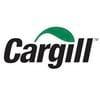Effects of PCV2 vaccines on pig performance
Published: July 28, 2025
Source : P. Bourguignon 1*, I. Messager 2, P. Glatre 2 / 1 Epicea - Réseau Cristal, Cerizay; 2 Boehringer Ingelheim France, Reims, France.
Summary
Keywords: PCV2 vaccine, performance
Introduction:
In many cases, vaccination against PCV2 and Mycoplasma hyopneumoniae is done around weaning when piglets have to cope with many stressors. The pig’s performance around weaning is critical for the later performance and the degree of variability after weaning has a substantial impact on the variability at the end of finishing. The objective of this trial was to determine whether the negative impact of a vaccine on the weight gain shortly after vaccination has an impact on the weight gain until slaughter.
Materials and Methods:
The trial was conducted in a French farrow to finish 1200 sows a PRRSv-negative farm. From weaning to slaughter the mortality rate in this farm is usually about 4% and the feed conversion rate is around 2.55. In total, 1158 pigs of 2 following farrowing batches were included in the study. One day before weaning, the piglets were weighed individually, randomly allocated to either Group 1 or Group 2 and marked individually with an ear tag. Piglets in Group 1 were vaccinated with Ingelvac MycoFLEX (1 ml) and Porcilis PCV (2 ml) whereas piglets in Group 2 received Ingelvac MycoFLEX and Ingelvac CircoFLEX (1 ml of each vaccine, freshly mixed). In addition, 10 non-vaccinated sentinel piglets per batch were included to assess the PCV2 infection status. The piglets were weighed again individually 14 days after vaccination. Average Daily Gain at slaughter was calculated considering the number of days to slaughter. Data between the groups was compared using a t-test except losses using a χ² test.
Results:
At inclusion mean body weights, sex ratio, parity as well as age were similar between the two treatment groups. The PCV2 PCRs as well as the Elisa tests on the 10 sentinels indicates that the pigs did not get infected with PCV2 during the study.In total, 28 pigs died during the study, 14 in each treatment group. 14 days after vaccination, the ADG was significantly greater (p< 0.0001) in Group 1 (199.7 g/day) than in Group 2 (216.3 g/day). At slaughter, ADG was 698.3 g/day in Group 1 and 706.4 g/day in Group 2. The significant difference observed 14 days after vaccination was sustained until slaughter (p=0.045).
Conclusion:
The outcome of this study indicates that the differences in local and systemic reactions between commercial PCV2 vaccines that can be observed shortly after vaccination have an impact on weight gain until slaughter. Since there was no evidence of a PCV2 circulation, this study demonstrates that the safety and not only the efficacy of a vaccine should carefully be considered when choosing a PCV2 vaccine as it might impact the overall pig performance.
Disclosure of Interest: None Declared.
Published in the proceedings of the International Pig Veterinary Society Congress – IPVS2016. For information on the event, past and future editions, check out https://www.theipvs.com/future-congresses/.
Content from the event:
Related topics:
Recommend
Comment
Share

Would you like to discuss another topic? Create a new post to engage with experts in the community.









